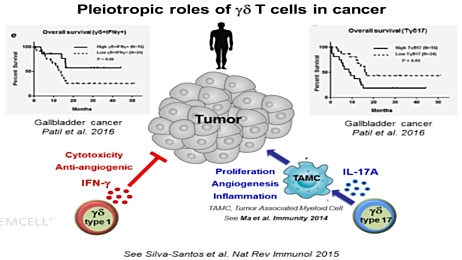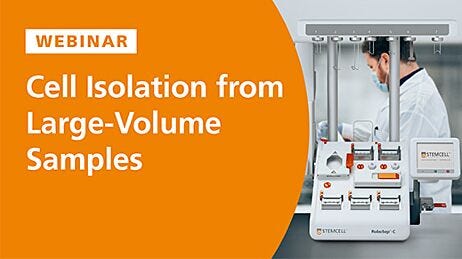Q&A: Next-Generation Cell Isolation Solutions for T Cell Therapy Research
Meet the Speakers

Dr. Amanda Durkin
Dr. Amanda Durkin received her PhD in Biomedical Science with a focus on immunology from Laurentian University. She is currently a Product Manager for immunology at STEMCELL Technologies, where she helps transform innovative ideas and technologies into reliable products and quality solutions.

Dr. Frann Antignano
Dr. Frann Antignano is a Principal Scientist at STEMCELL Technologies, where she leads a team of researchers who develop innovative products to isolate and expand immune cells.
Due to their central role in the adaptive immune response to cancer and foreign pathogens, T cells are a focal point of both fundamental and translational research. Staying at the forefront of these evolving fields requires adopting more efficient, scalable processes. In this on-demand webinar, Drs. Amanda Durkin and Frann Antignano (Q&A guest) discuss STEMCELL’s cell isolation solutions for fast and easy T cell isolation. This presentation also focuses on large-scale research strategies by introducing our new mobilized leukopaks and features the Easy 250 EasySep™ Magnet—a scalable and efficient system for manual column-free isolation. These next-generation tools enable researchers to streamline and accelerate their translational T cell research.
Q&A Report
What T-75 flasks are compatible with the Easy 250 EasySep™ Magnet?
Standard T75 cm2 flasks will work. The one we recommend on our product information sheet is a Corning® flask. There are a few considerations when choosing a flask. First is the dimension: the flask has to fit properly into the magnet or the magnetic surface won't be able to efficiently pull the cells to the walls of the flask. Another consideration is how much volume the flask can hold: there are flasks that can fit into the magnet but can’t hold the maximum volume used in a cell isolation. Other flasks don't work because of the geometry of the opening: either the angle of the flask opening is not conducive to allowing a 25 mL pipette to fit straight down into the flask without scraping the sides of the flask, or the opening itself does not easily fit a 25 mL pipette. Ideally, we would recommend that you refer to the product information sheet or reach out to our Sales representatives and Product & Scientific Support team at techsupport@stemcell.com for more information.
What are some typical pre-processing steps you recommend when using fresh leukopaks?
For a lot of products, we recommend a lysis step to remove red blood cells followed by a few slow centrifugations to get rid of platelets. To save time and eliminate the red blood cell lysis step, you can wash the leukopak cells in the recommended medium, which is typically EasySep™ Buffer. We recommend that you refer to the product information sheet for kit-specific instructions.
Can I use frozen cells with the Easy 250 magnet?
We recommend starting with fresh cells to avoid any risk of potential quality issues, or reaching out to your local Sales representatives and Product & Scientific Support team at techsupport@stemcell.com for guidance.
What is the typical number of cells in a mobilized leukopak? Is it more than a standard leukopak?
The number of cells in a mobilized leukopak, in general, is more than in a standard leukopak. However, the cell numbers vary depending on the mobilizing agent used, treatment schedule, collection time, and many other factors.
Do you have options to isolate low frequency antigen-specific cells in PBMCs?
We have EasySep™ indirect kits that target antibodies labeled with PE, APC or biotin, with magnetic particle-labeled or particle-free versions to choose from. We also provide an antigen-specific T cell isolation protocol explaining how to isolate antigen-specific T cells using antigen-induced markers or tetramer strategies with the EasySep™ Release Human PE Positive Selection Kit or EasySep™ Human PE Positive Selection Kit II.
Try It in Your Own Lab!
Unsure if the Easy 250 EasySep™ Magnet is right for your research? Fill out this form to arrange for a live or virtual demonstration to try it in your own lab to isolate human immune cells from samples of up to 225 mL.





